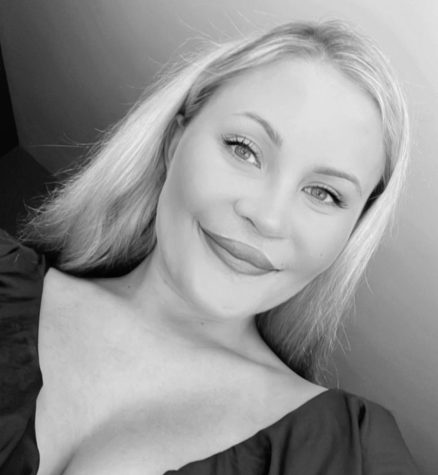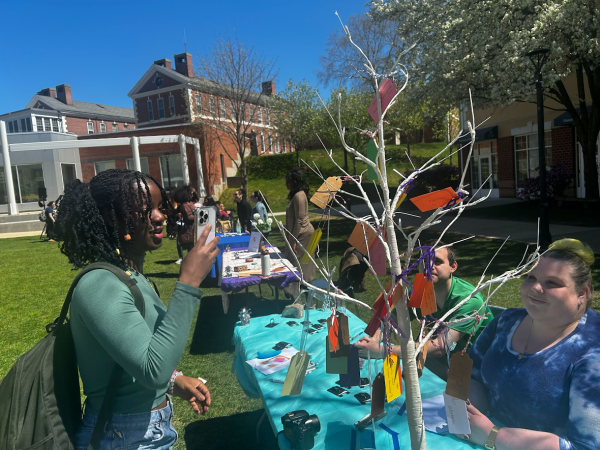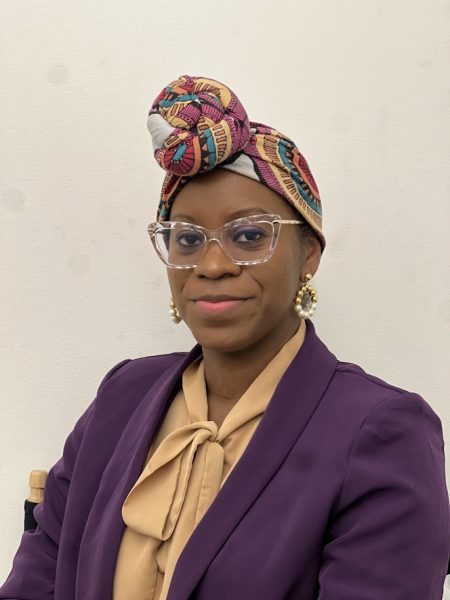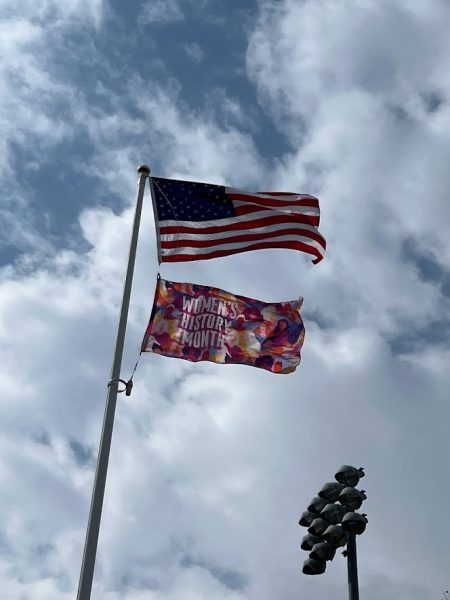‘Precipice of Extinction’ gallery show encourages student action for environmental change
Photo courtesy of Charger Bulletin/Saige Batza.
Artwork of a polar bear on display at Cheryl Gross’ gallery, West Haven, Sept. 15, 2022.
On Sept. 15, Cheryl Gross, distinguished illustrator, artist and writer, hosted “Commit to Memory: Precipice of Extinction,” an informal gathering in the Seton Gallery of Dodd’s Hall.
Upon arrival, students and faculty enjoyed food and beverages provided by event organizer and Chair of the Art and Design Department Guy-Serge Emmanuel mingled with guests as Gross displayed her colorful artwork in Seton Gallery.
Gross has been a professional in the industry for approximately 40 years but has been an artist for as long as she can remember. She said, “I was in college but then left for a career as an illustrator and painter. Thirty-five years later I decided to come back to continue my bachelor’s and then eventually get my masters.”
The artist reflected on many of her major accomplishments, saying she is most proud of the times when she makes headway or a new discovery in a project she’s invested in. “I’m also proud of the fact that my work resonates with people, which is very important.”
Gross said she hopes students enjoy her artwork, gesturing to her vivid paintings adorning the walls. She said, “I hope they can come away with the fact that even though they are very colorful paintings, and some may seem a little humorous, it’s not really. It’s more of an awareness of how our environment is rapidly deteriorating.”
She explained her work is a symbol for a greater purpose, one that educates its witnesses on the impact of the unconscious choices we make that inevitably lead to environmental extinction.
“Hence the [title] ‘Commit to Memory: Precipice of Extinction,’ all these animals that are portrayed are on the endangered species list,” said Gross, highlighting one of her paintings that depicted a fish underwater, stuck inside of a used plastic bottle. The colorful strokes of yellow and blue paint illustrated a much greater symbolism with its explicit message, a call to action to prevent the extinction of endangered species, one small choice at a time.
Throughout her career, Gross has unfortunately come into contact with many people who don’t understand the significance of small choices that they make, such as littering trash or choosing not to recycle plastic. She says, “I know a lot of people that are climate deniers. I had this one guy say to me, ‘I don’t buy it,’ and I said, ‘You don’t buy it, but it’s not for sale.’”
Gross encouraged students at the university to advocate for the betterment of the environment simply by educating oneself via the internet, joining campus groups and utilizing resources on campus. She highlighted the fact that putting things into perspective is necessary to understand the significance of environmental support.
“When it affects you personally, it’s not fiction anymore. It’s not fantasy or television anymore.” She said, “I’m kind of hoping that people will gain more of an awareness of this, and perhaps join groups and not litter, do whatever they can to help clean up the environment and not contribute to pollution.”
Gross advised students to “do good work” if they hope to follow in her footsteps and use her career path as an example for their own.
She encouraged students to find their own niche and produce work that they’re proud of. She said, “Make sure you understand constructive criticism because you need to finish your work and make sure that it’s well-rendered.”

Saige Batza (she/her) is a sophomore psychology major with a concentration in community and society. She looks forward to another year of hard work for...









